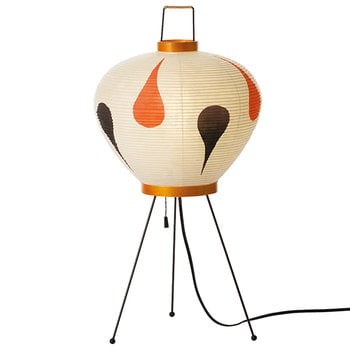Vitra’s mesmerizing Akari Light Sculptures are sculptor Isamu Noguchi’s modernist interpretation of Japanese paper lanterns. The first luminaires were designed in 1951, while Noguchi stayed in Gifu, Japan and got inspired by the traditional lanterns used by local fishermen for night fishing at the Nagara River. Today, the iconic collection consists of over hundred lightweight table, floor and pendant lights that come in various shapes and sizes.
The Akari lights are handcrafted of bamboo ribbing and translucent washi paper that is made from the inner bark of the mulberry tree. Isamu Noguchi has compared the light of Akari to sunlight filtered through traditional shōji paper doors – the light sculptures create a warm glow and pleasant ambience. According to Noguchi, "All that you require to start a home are a room, a tatami, and Akari.”







